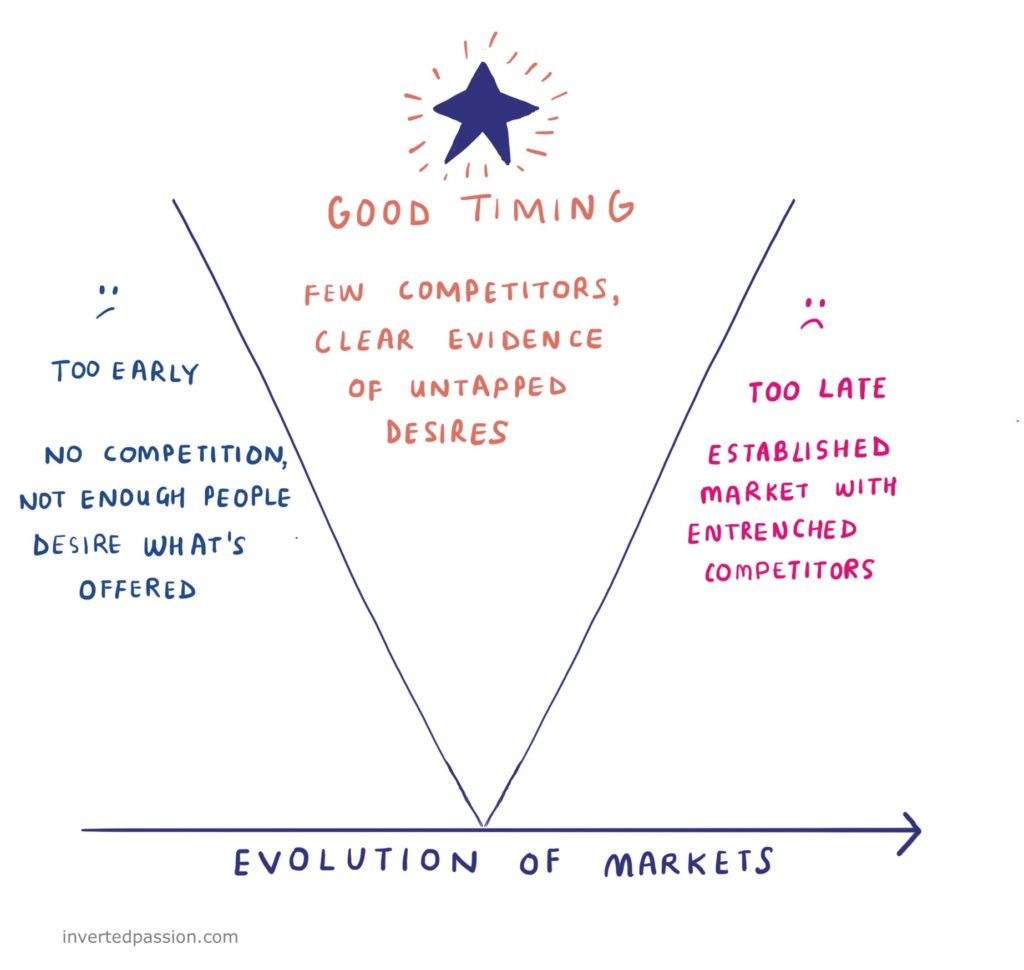Any one person or one company cannot create a new market. Markets are usually co-created by multiple competitors offering to satisfy a particular customer desire. Even the markets that seem to be dominated by one company usually have multiple credible competitors – Google has Bing and DuckDuckGo and Facebook has Twitter, TikTok and Snapchat.
Oligopolies exist because the first company to launch a product is rarely a home-run in terms of getting the market-product fit right. In fact, the innovative company ends up producing evidence for demand in the market for fast followers.

The usual evolution of a market goes something like this.
First, a few startups or big companies launch innovative products that customers aren’t yet ready to adopt because what’s offered is often too unfamiliar, costly or inconvenient. Think of that awkward first-generation product in any category that most customers feel weirded out by.
However, not all customers reject innovations. Early adopters love to try the new. And if a product succeeds with early adopters (and many don’t because nobody wanted it in the first place), the first line of evidence emerges that there’s a possibility of a latent desire in the mass market.
But many early entrants struggle because they keep focused on early adopters for long, who are not only a small market but often overwhelm the company with their feedback and non-stop demands. At this stage, a smart entrepreneur should observe and learn from the limited but certain success of innovations with early adopters. Study what did they get right, and what did the get wrong. Think of electric cars before Tesla. What made early adopters rave about electric cars? Why did the mainstream not adopt it?
After early experiments by multiple companies in trying to kickstart a market, there’s a narrow window when the timing is just right for a good solution that’s affordable, fast and convenient to address the latent demand of the mass market and grow massively. The window to penetrate mass market is narrow because the evidence from awkward early experiments tempts many entrepreneurs to jump into the game with their own takes on the product. And, sooner or later, one of them is bound to get it right. After Dogpile, Altavista, Lycos and Yahoo, Google finally emerges.
And hence, the business that dominates the market is often not the first but the one that learns from the first few ones to finally get it right enough to penetrate the mass market. Think Facebook, not Myspace. Think iPhone, not Blackberry. History is littered with late movers over taking first movers.
The good news for entrepreneurs is that windows of opportunities for startups always keep opening and closing in various markets at different points in time. The bad news is that any particular window of opportunity remains open for a short time. Therefore, timing in a market can make or break a business. Launch too soon and customers reject it for being too unfamiliar and launch too late and the market is already well-established.
Both having no competitors or having too many competitors is a clear sign of wrong timing. Don’t build things nobody wants. And don’t build things that competitors are already fulfilling. Capitalism rewards rare and valuable.
Remember: be an early mover, but don’t be a first mover as the lack of competition most likely signifies a lack of genuine customer desire.
This essay is part of my book on mental models for startup founders.
Join 200k followers
Follow @paraschopra